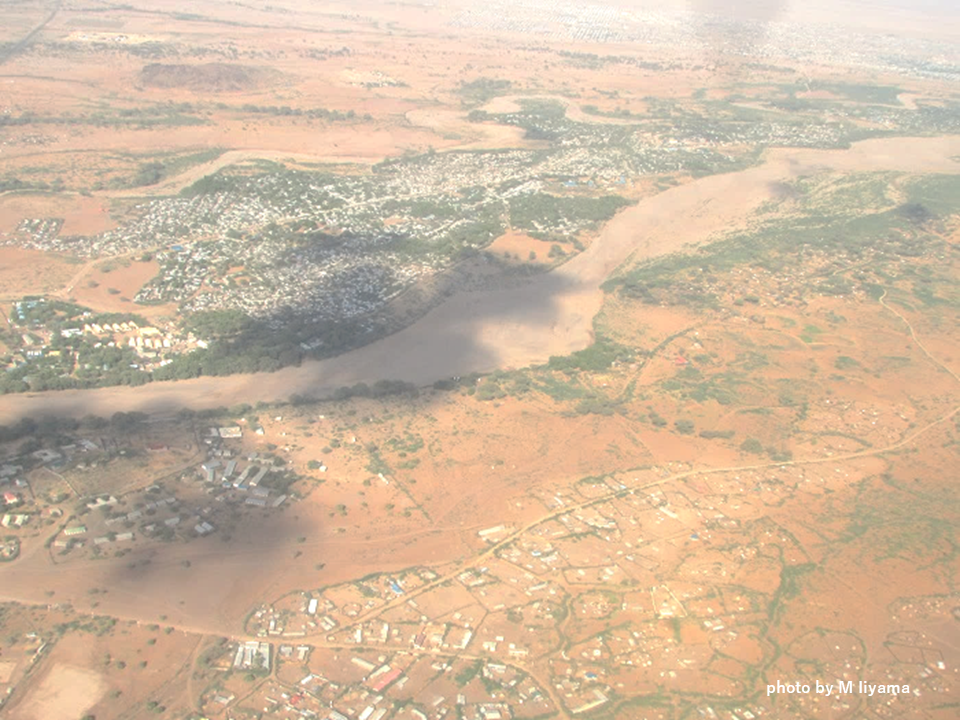Pick Up
737. Measures Against Extreme Weather Disasters~Leave No One Behind~

737. Measures Against Extreme Weather Disasters~Leave No One Behind~
Climate change is increasing the frequency and magnitude of extreme events, which have a profound impact on local economies, people's livelihoods, and the natural environment.
Floods and droughts, which are extreme events of the hydrologic cycle, are the opposites of the hydrologic cycle, and although they differ in the regional and temporal distribution of precipitation, they interact with each other, often causing cascading damage. For example, drought increases the risk of flooding due to rainfall runoff through soil degradation and reduced storage and infiltration capacity of surface soils. Compared to the past (1982-2001), the last 20 years shows an increasing trend in the frequency of floods and droughts in Africa, although the frequency of floods (+180%) was reported more frequently than that of droughts (+30%). On the other hand, droughts tend to affect a larger area and a larger number of people for a longer period of time due to the slow-moving and widespread process, compared to floods that are confined to one or two catchment areas and occur suddenly. In recent years, floods have affected a peak of 7 million people in Africa in 2020. In contrast, drought affected 24 million people in 2011, 30 million in 2015, and 33 million in 2021, bringing the total number of people affected by drought in the decade from 2002 to 2021 to 295 million, about five times the 58 million people affected by floods in the same period.
Flash flood, as defined by NASA, refers to a rapid rise of water along a stream or low-lying urban area. Flash flooding occurs within six hours of a significant rain event and is usually caused by intense storms that produce heavy rainfall in a short amount of time..
Nature has published an article discussing the increasing threat of flash floods in arid regions of the world in recent years. Last year, widespread flash floods affected nearly two-thirds of the population of Pakistan, killing more than 1,500 people and leaving some 33 million homeless. Parts of Africa, the UAE, Iran, Saudi Arabia, Qatar, Oman, and Yemen also reported flash floods that killed approximately 2,000 people. Vulnerable societies are more severely affected, with people from low- and middle-income countries accounting for 87% of all flash flood victims since 2000, and 97% of all fatalities. Developing countries with large segments of poor societies are required to take a multifaceted approach and be more inclusive than ever before.
The paper pointed out that the drier the soil, the more it repels water rather than absorbs it, which is why flash floods are more damaging in arid regions than in areas that are originally water-rich. Flooding in wet areas occurs after prolonged rainfall, whereas in arid areas, the water table rises with as little as 10 mm of rain per hour. Rapid rainfall runoff causes soil erosion, especially in mountainous areas where water is discharged along slopes through gullies, resulting in extensive damage. On the other hand, people in arid regions have been unprepared for flash floods, tending to live in flood plains out of concern for drought, and have not placed much emphasis on damming and other countermeasures. 74% of the deaths. In addition, most of these floods (87%) and related deaths (97%) are concentrated in low- and middle-income countries.
The paper proposed the following priorities for researchers, practitioners and policy makers to protect people's livelihoods from flash floods in arid regions:
1. Gather data and map the risks: Securing data such as meteorological and hydrological measurements, topographic data and digital elevation models, records of assets and previous losses, and census data.
2. Develop early-warning systems: Support the development and implementation of early warning systems
3. Boost resilience to sudden floods: Improvement of dams, levees, and reservoir flood control facilities
4. Plan for long-term resettlement: Relocation of people from high disaster risk areas.
5. Provide finance beyond disaster aid: Provide and support disaster insurance coverage, including national insurance schemes.
6. Improve public awareness and responses: Promote understanding of disaster risks, precautionary measures, and evacuation procedures.
In today's world, where weather, geography, and socioeconomic conditions are all intertwined, we must continue to strive to "leave no one behind.
References
Yin J et al. Flash floods: why are more of them devastating the world’s driest regions? Nature, 07 March 2023 https://www.nature.com/articles/d41586-023-00626-9
Centre for Research on the Epidemiology of Disasters CRED, The interplay of drought-flood extreme events in Africa over the last twenty years (2002-2021), Cred Crunch, Issue No.69, December 2022. https://cred.be/sites/default/files/CredCrunch69.pdf
Contributors: IIYAMA Miyuki and Solongo TUMUR (Information Program)
